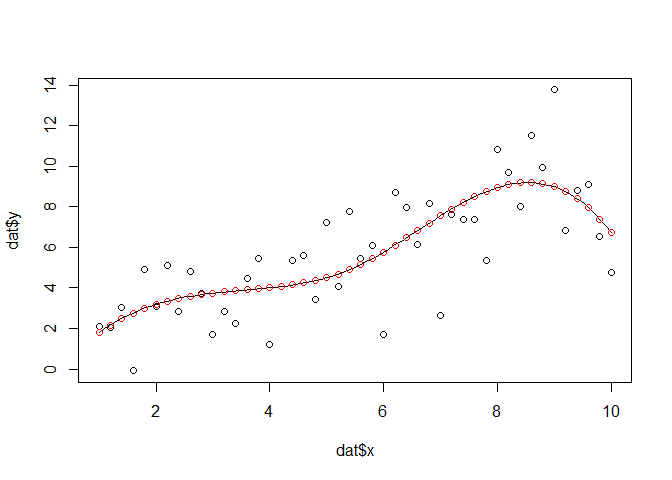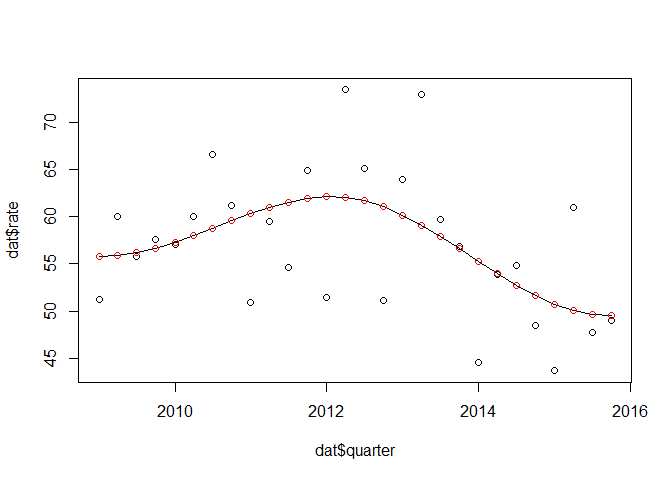I have a time series data for neighbourhood and crime rate per year for about 300 observations (neighbourhoods) (example below).
Neighbourhood year rate
5001 2009 43.5
5001 2010 34.7
5001 2011 40.8
5002 2009 28.9
5002 2010 33.8
5002 2011 24.4
. . .
. . .
I applied spline regression by group (for each neighbourhood) to plot their curves over time and ended up with 6 coefficients for each observations:
CensusTract (Intercept) bs(rep$year, 4)1 bs(rep$year, 4)2 bs(rep$year, 4)3 bs(rep$year, 4)4
[1,] 5001 36.14530 17.502968 7.3978890 13.9133907 5.70852015
[2,] 5002 64.62910 19.849905 -16.5157307 -10.7476461 -20.38942429
[3,] 5003 60.62435 30.698498 3.8573157 10.3343372 2.42415531
[4,] 5004 117.41211 20.563574 -56.1543275 -42.1466082 -70.43030322
[5,] 5005 65.11512 6.628532 -0.1630097 -13.9509698 -32.82296251
[6,] 5006 71.56126 11.982026 -21.9261412 -20.3717788 -39.88968841
[7,] 5007 51.69142 13.757720 -0.9959946 17.3522501 1.03887025
I run k-mean clustering to cluster spline coefficients and ended up with 3 clusters
Cluster means:
CensusTract (Intercept) bs(rep$quarter, 6)1 bs(rep$quarter, 6)2 bs(rep$quarter, 6)3 bs(rep$quarter, 6)4
1 5046.074 45.52149 23.9330434 7.38961 7.318444 -0.938248
2 5033.760 63.23948 12.8276297 -14.20825 -15.074422 -23.002576
3 5031.500 113.91280 -0.8379427 -68.82647 -56.071503 -80.903656
My question is:
How can I plot these coefficients to see the 3 curves of these clusters?

